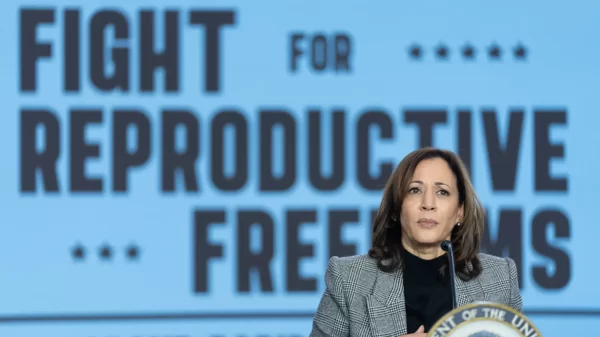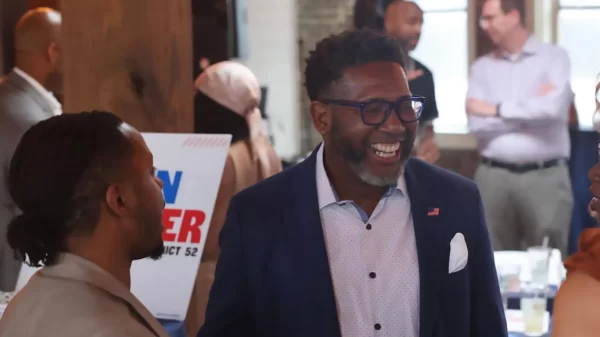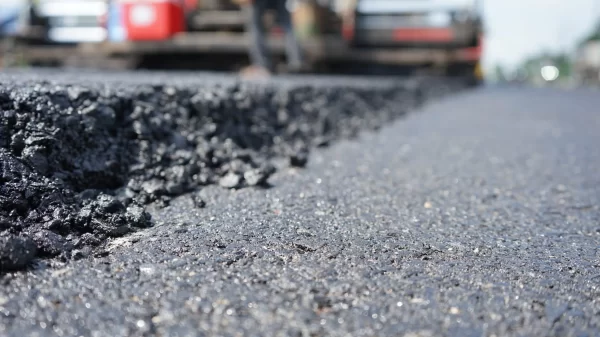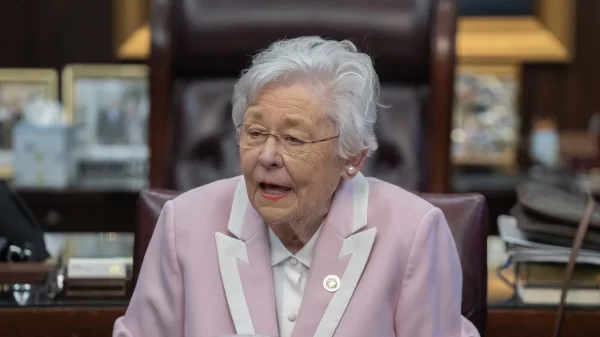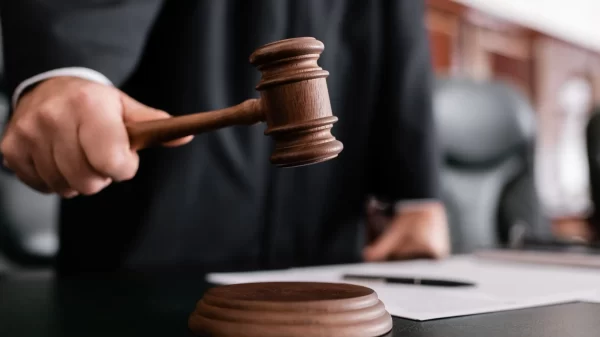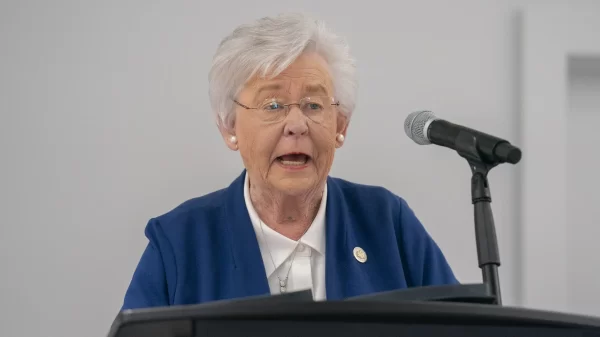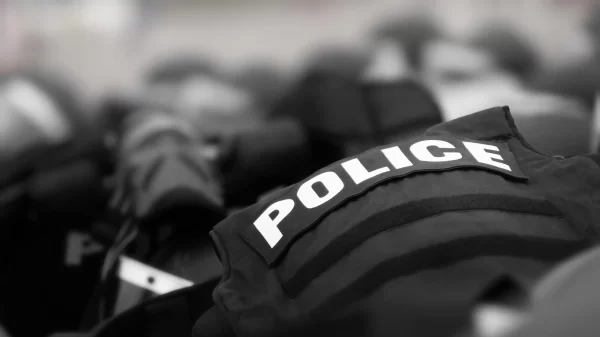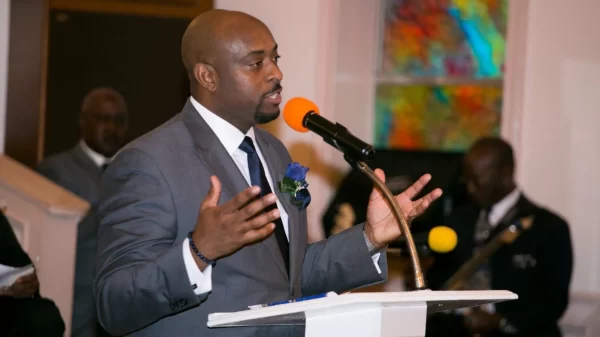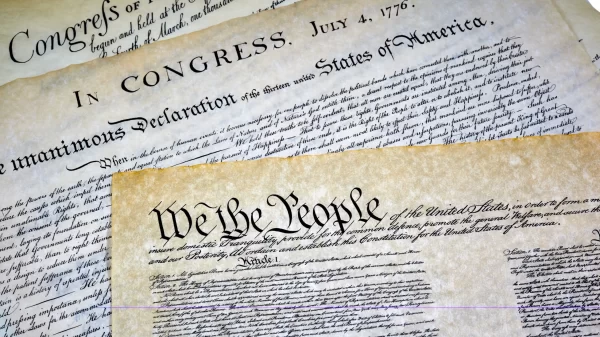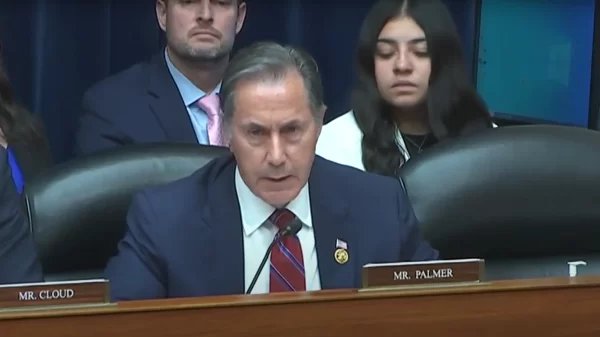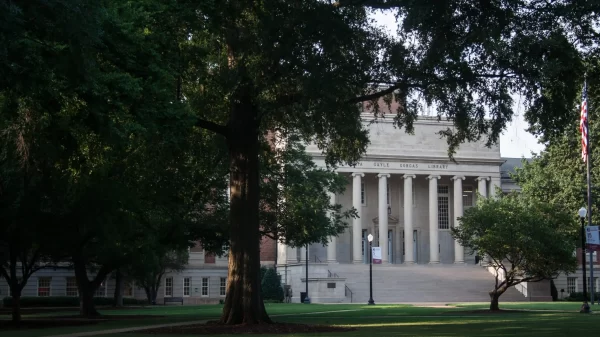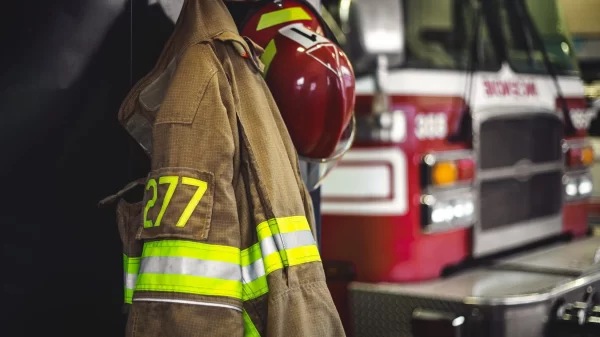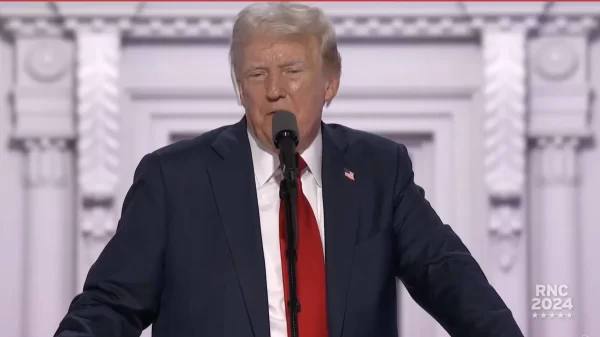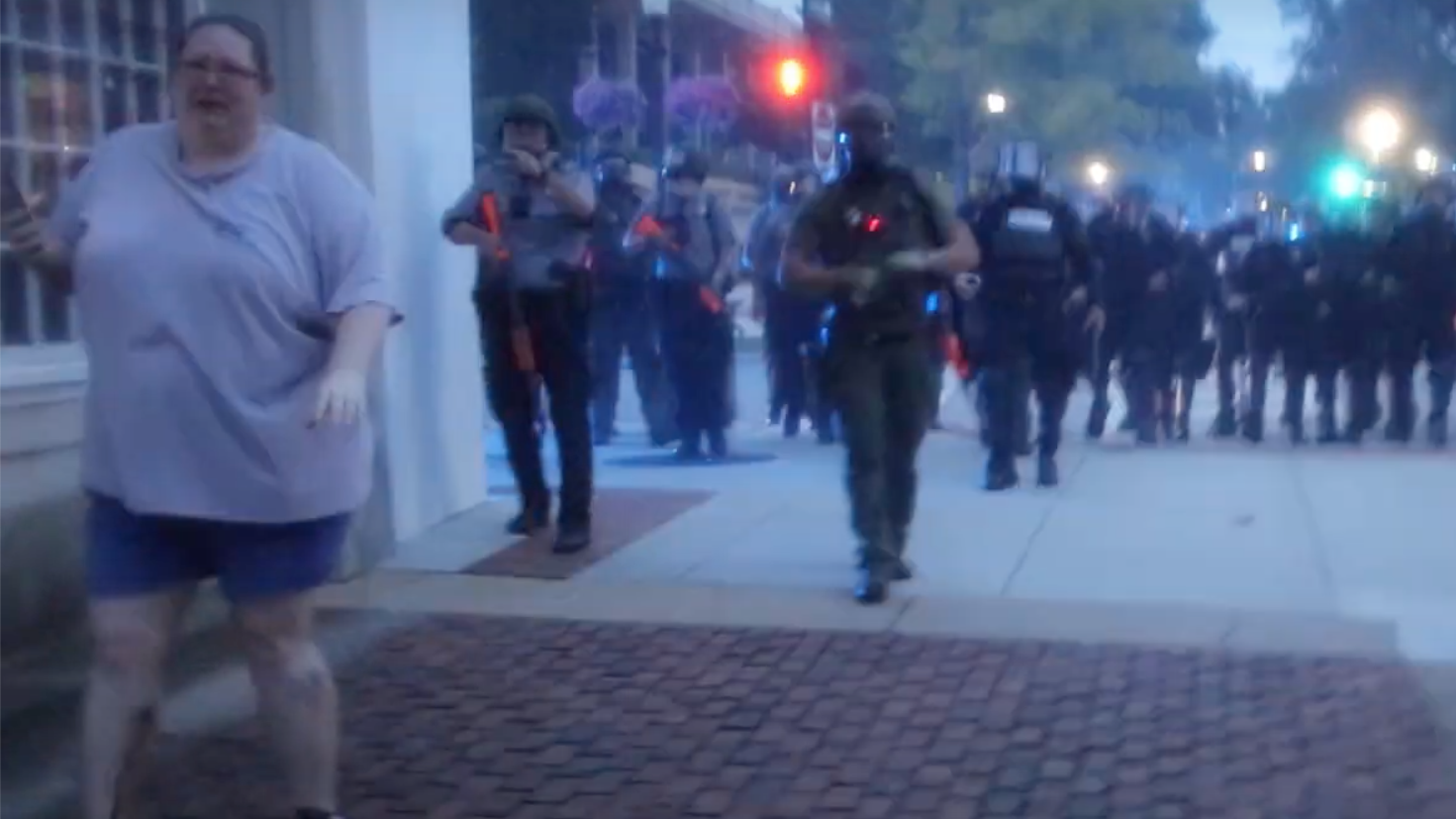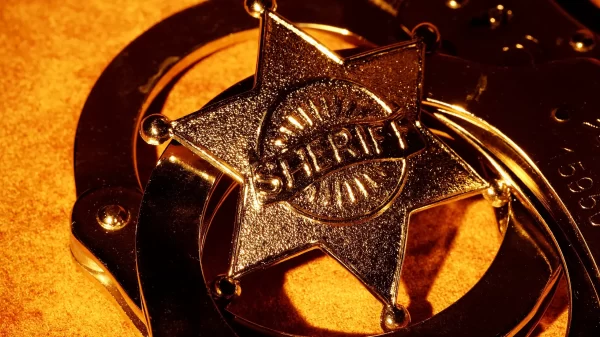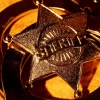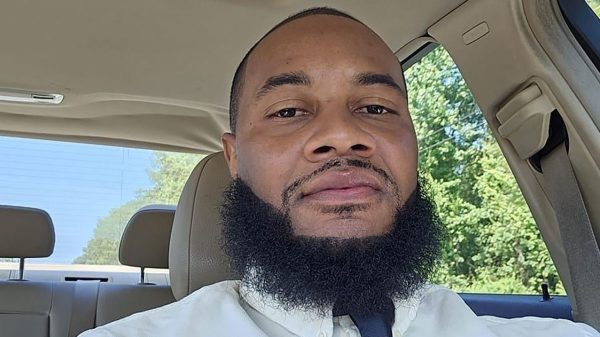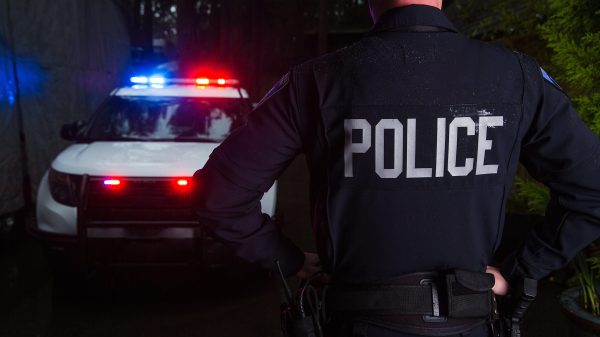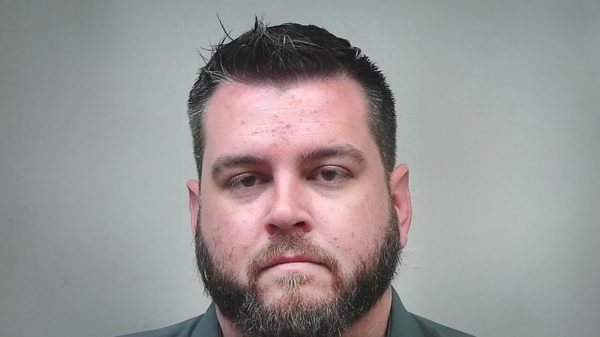April Grubb isn’t sure exactly what made her tell her daughter to leave the scene of the rally they had just attended together in Huntsville on June 3, 2020. It was her first time attending a protest, a last-minute decision after she got off work. As a white woman raising two Black children, she thought it was important to share the historical moment with her 18-year-old daughter by showing up.
She had heard a police order to disperse, and while plenty of people were still standing around, everybody seemed orderly and calm, “like they could have been gathered for church,” she said.
Still, something was triggering her protective instinct so she told her daughter to go. Grubb decided to stay, not thinking she’d be anybody’s target if things went bad.
“I’m like no, I’m fine. I’m white, I’m huge and I’m non-threatening. There’s no way in the world that I’ll get hurt,” she said.
She was recording the scene on Facebook Live a short time later when her daughter called to say where she was. After hanging up, Grubb was still recording as she started to leave, walking backwards past the courthouse where Madison County Sheriff’s Office deputies were stationed. That’s when they descended down the building’s steps and merged with a row of Huntsville Police officers.
“As I was backing up, they started shooting,” she said.
Grubb felt something slam into her right calf. She looked down and thought the dark fluid she saw was a dye from whatever projectile struck her. She kept moving away from the police line, trying to get out of their way as they advanced. She kept getting shot — six times in total.
She estimates that five minutes elapsed between the first and last rounds that hit her. She was struck in the back of her left thigh, the side of her left calf, twice in her right calf, the back of her right thigh and in the right side of her abdomen. She was struck three times while facing the police line and walking backwards, once while turning and twice while her back was to police, she said.
Grubb, 40, is an account manager for an industrial and aerospace wholesale company that works with government contractors. She has lived in Huntsville for 25 years. The circumstances of her injuries raise questions that go to the heart of the controversy about how police operated that day.
Grubb said she was moving slowly due to her size and a knee injury she suffered two years before. She said she was never more than 25 feet from the nearest sheriff’s deputies who were firing the type of rubber rounds that hit her. She didn’t know it yet, but the first that struck her embedded completely in her calf. A doctor removed it 14 hours later.
What he pulled out was a dimpled solid rubber slug made by Lightfield Ammunition, a manufacturer based in New Jersey. The company recommends using it at distances of no less than 20 yards, or 60 feet. Grubb was much closer than that.
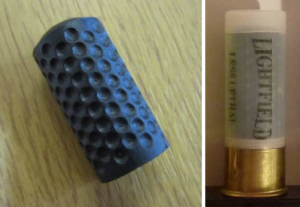
A Lightfield intermediate rubber round. Image courtesy of Omega Research Foundation.
Unlike others who were hit in areas the manufacturer warns against targeting — like the chest impact suffered by David Capo, who captured the end of Grubb’s ordeal in a video he posted to YouTube — Grubb was struck in the large muscle groups and soft tissue that Lightfield designed its intermediate-range rubber slug for.
“But the fact it penetrated is worrying,” said Neil Corney, a researcher with Omega Research Foundation, a U.K.-based organization that specializes in identifying less-lethal munitions and tracks their use. The round is fired from a 12-gauge shotgun with enough force to cause severe damage at close range, he said.
Grubb remembers a small number of people, less than a dozen, in her vicinity as the police line advanced. The bulk of the crowd had already moved down the street, so it was the stragglers who were being shot at, she said.
“Every single shot that they fired went against the manufacturer’s recommendation,” she said.
The fact that she was struck repeatedly at close range, in clear view of deputies and without presenting a physical threat to anyone — particularly that she was shot from behind while walking away — suggests that she was targeted in a manner that violates international guidelines for the use of kinetic impact rounds, the umbrella term for blunt-force projectiles like rubber bullets and bean-bag rounds.
A guidance document issued last year by the Office of the United Nations High Commissioner for Human Rights warns of the risk of bodily penetration at close range. It specifies narrow circumstances for their use: “Kinetic impact projectiles should generally be used only in direct fire with the aim of striking the lower abdomen or legs of a violent individual and only with a view to addressing an imminent threat of injury to either a law enforcement official or a member of the public.”
Huntsville Police Chief Mark McMurray has stood by his justifications for using kinetic impact rounds as a deterrent for potential violence, although he has never publicly said who authorized the sheriff’s deputies to use them. Sheriff Kevin Turner’s office has ignored multiple inquiries about the rubber rounds’ deployment that day and has not made the agency’s guidelines for their use public.
Both agencies refused to cooperate with the Huntsville Police Citizens Advisory Committee investigation into this aspect of police actions on June 3.
In its report, the HPCAC cited one instance of an HPD officer apparently firing five fin-stabilized rounds on June 3 without authorization, according to that officer’s body camera audio. Finned rounds are a more common type of rubber bullet and are less accurate than the Lightfield rounds that sheriff’s deputies used. The latter has a hollow base design that increases the round’s surface area contact with the gun’s barrel, which keeps it properly oriented once it exits the muzzle.
The HPCAC report stated that that officer “is no longer with HPD” but did not say if his departure was voluntary or related to his unauthorized use of less-lethal munitions. No other disciplinary measures have been disclosed by any agency involved, nor have they publicly clarified their rules for rubber rounds, or whether deputies violated them or were ordered to deploy them within or outside of policy guidelines.
Turner has made scant public statements about his deputies’ actions on June 3, but he praised them in a Facebook post on April 28 in response to the HPCAC report’s findings, telling deputies they “stood tall, remained professional, and represented your county well.” He wrote that he continues to stand by their actions, which he said were “thoroughly reviewed,” though he did not say by whom.
After she sustained her injuries, Grubb was helped away by fellow demonstrators. A man who wrapped his arm around her yelled, “This what this all about.” Tear gas was billowing through the streets and she was having trouble breathing. Blood was streaming down her legs but no police attempted to help her, she said. Demonstrators helped her to a triage area and then into the safety of a parking garage.
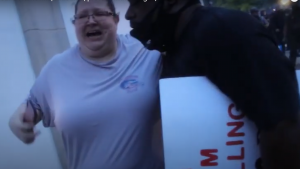
A demonstrator helps Grubb after she was injured. Image courtesy of David Capo.
That’s where Ian Hoppe, a videographer with AL.com, saw her. He tweeted a five-second clip of her with rivulets of blood flowing onto her shoes that went viral.
“That was the first time I had ever seen what a rubber bullet does,” he said.
Hoppe said he had been shot at while he was holding up his large press pass. The shooting started, he said, once the deputies merged with HPD and formed a new line to advance toward the crowd. Once they started shooting, they seemed to be shooting at anybody in front of them — and seemed to relish wielding their weapons, he said.
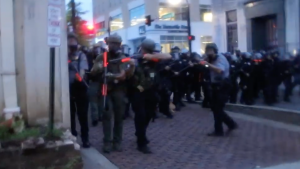
A Sheriff’s deputy points his shotgun around a corner during a crowd dispersal maneuver on June 3, 2020. Image courtesy of David Capo.
“I remember seeing a dude jump over one of the barriers they had by the stairs, and he cocked that shit like it was fucking Call of Duty or something like that. He was, like, cosplaying and shooting people in the streets with a rubber bullet gun. It was like they were loving playing with those toys,” Hoppe said.
Grubb’s physical healing has been slow. She had to see a doctor every two weeks for several months, but stopped going because she was getting written up at work for missed time. She is still badly bruised on her legs. She suffered deep tissue damage to each calf and still has pain. She expects it to take several years to fully heal. Her right calf will have a permanent dent in it unless she gets plastic surgery to fill it.
She would wake up in cold sweats for months afterward, reliving that day in her nightmares. She sank into a depression. She avoided going downtown at all.
“Just seeing the word sheriff written on a car just causes my body to react,” Grubb said.
Since October, she has been in touch with attorney David Guepass about pursuing a lawsuit. By failing to allow her to leave before shooting her, Guepass thinks police committed a serious constitutional violation, he said.
“That is emphasized by the fact that April was not arrested,” he said. “She was simply shot several times while she was leaving. If we take those facts on their face, that is certainly grounds for litigation.”
Guepass said he filed a public records request with the Sheriff’s Office months ago but has not heard back. Alabama’s public records laws make his task more difficult because they give government agencies lots of leeway in how, when and if they must respond.
The statute of limitations runs out two years after the incident, which Guepass said leaves plenty of time to investigate. If he files a suit and it makes it to trial, qualified immunity allows implicated officers certain rights that can drag the process out or cut it short, like the ability to appeal a motion for summary judgment.
For now, Grubb’s first protest remains her last. She knows that going to others doesn’t mean she’ll get shot, she said, “but I can’t shake that fear that I will be the victim of excessive police force again.”
Editor’s note: This article has been updated to correct the locations of her injuries and the timeline of her recovery.


